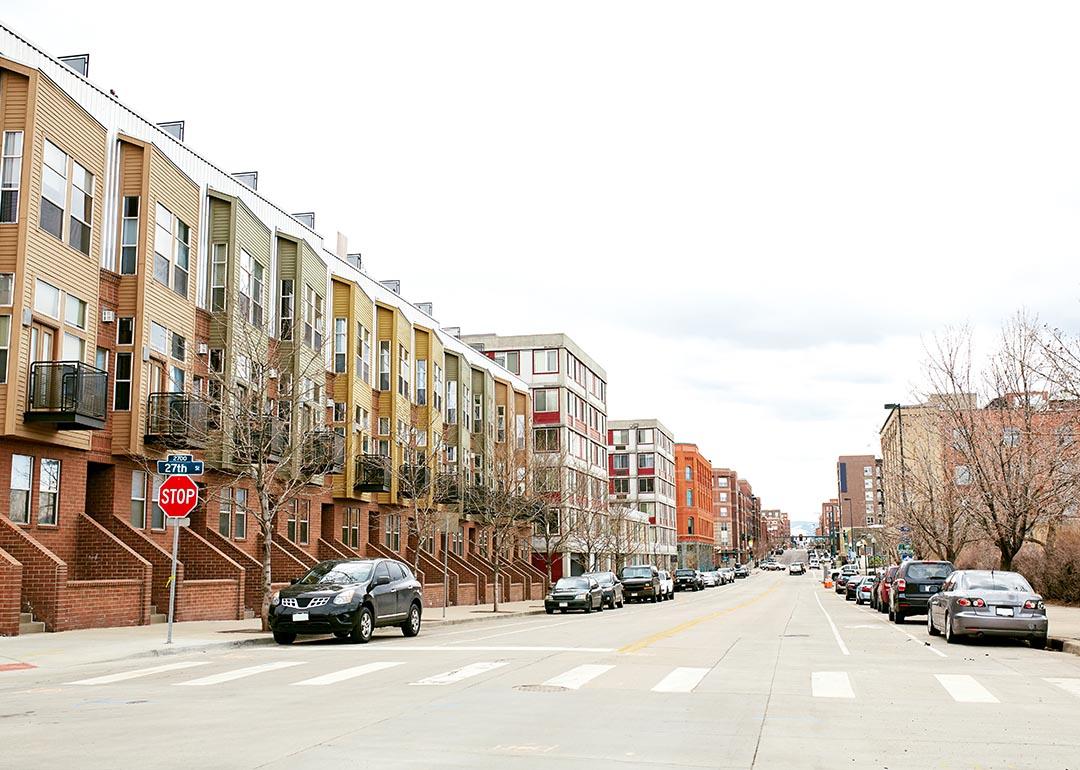
Denver’s housing market is on shaky ground. Is your city next?
Denver’s housing market is on shaky ground. Is your city next?
Denver’s housing market is cooling off in 2025, and the entire country is taking notice.
After years of unsustainable growth, average home values in Denver have dipped 4.6% over the past year. The change marks a sharp U-turn from the pandemic surge, when prices soared 38.5% between March 2020 and April 2022. For those looking to sell, this slowdown is a hard pill to swallow. For many buyers, it feels like the first real chance to find value in years.
What was once one of the country’s hottest metros has now shifted into a tentative buyer’s market (for those still able to participate). After all, just a few years ago, homes in Denver routinely sold for above asking price. Now, high prices, steep interest rates, and inflation are squeezing budgets and keeping first-time buyers on the sidelines. It’s a tricky moment to buy and sell real estate in Denver, TurboTenant reports.
And what happens in Denver almost certainly won’t stay in Denver. Local shifts often foreshadow broader regional and national housing trends, potentially turning the Mile High City into a warning sign for the national housing market. The key question now is whether Denver’s slowdown is a passing phase or a preview of what’s to come.
Denver’s Housing Market Shift
Supply is abundant compared to just a year ago. Active listings in the metro climbed to 13,995 in July 2025, up more than 32% year-over-year. Homes are sitting on the market longer, sellers are trimming prices, and bidding wars are now a distant memory. For the first time in years, buyers are calling the shots in Denver.
But that doesn’t mean homes are suddenly affordable. Even with an average household income of $92,500, many buyers remain priced out of the market. With a median home value of approximately $537,000 (around 47% above the national average), the path to ownership remains tricky for many first-time buyers.
Further, borrowing costs pose another major hurdle. With a 3% interest rate (a relatively common figure during the pandemic), a $537,000 home with a 20% down payment meant a monthly payment of approximately $1,811. At today’s 6.45% average rate, payments on the same house equate to $2,701.
That steep jump represents a 49% increase, which unsurprisingly pushes homeownership out of reach for many families. For many investors, those same factors have stalled plans to grow. Meanwhile, Denver’s apartment rental vacancy rate has climbed to 7%, its highest level in 15 years, indicating that demand isn’t keeping pace with the number of available rentals.
On the investment front, buyers with capital see opportunity where others see risk. More inventory means motivated sellers, deeper discounts, and greater negotiating power. Investors who can handle today’s borrowing costs (or, better yet, buy in cash) may secure compelling deals now and refinance later if rates ease.
For landlords, this reality carries a clear lesson: you may need to pause growth, but savvy moves, efficient systems, and strong property management can turn uncertainty into lasting returns. The real question isn’t only what Denver’s market does next; it’s how buyers, sellers, landlords, and investors position themselves to respond.
Impacts Across Colorado
Colorado’s housing market is echoing Denver’s slowdown. In Boulder County, for example, new listings climbed more than 11% year-over-year, while Colorado Springs saw total active listings rise around 25% to 4,139 in August 2025. Climbing inventory, with homes remaining on the market for months, forces sellers to cut prices to stay competitive.
Still, the fact that more homes are on the market hasn’t translated into relief for most buyers. Affordability remains the sticking point, as elevated interest rates wipe out much of the benefit of lower prices. Even with more homes for sale, the bigger issues haven’t gone away: high rates and stretched budgets have sidelined many potential Colorado buyers from Denver and beyond.
Is this just a temporary cooling-off period, or a sign of bigger trouble brewing in the national housing market?
What Colorado’s Cooling Means for the National Market
Colorado’s housing cooldown isn’t happening in isolation. The question isn’t whether other markets will feel the impact, but when and to what extent.
Remaining in the West, bullish metros like Austin and Phoenix also show signs of cooling. Austin’s active listings hit a record 17,631 in mid-2025, up 17.3% year-over-year, while Phoenix inventory has surged to the tune of 24% more listings compared to last year, with many remaining on the market for over 60 days.
But not every market is following the Western cooldown. In much of the Midwest and South, homes continue to sell quickly, driven by more affordable prices and steady demand. Yet those stronger regions are starting to stand out as the exceptions.
Zooming out reveals broader national trends: Home sales are down year-over-year, affordability is at multi-decade lows, and the Fed has signaled potential rate cuts ahead. Together, these suggest the U.S. housing market is entering a transitional phase, one that may increasingly favor buyers.
Investor Opportunities and Tradeoffs
For real estate investors with cash on hand, conditions are well in their favor. Prices are softening, inventory is stacking up, and motivated sellers are leaving money on the table to part ways with their property. The adage rings true: marry the price, date the rate. In other words, buying now means betting on value and refinancing later when interest rates fall.
Negotiation power is also back on the table. Seller concessions (like rate buydowns and closing cost credits) are becoming increasingly common. Eager sellers are, on average, far more flexible than they were during pandemic years, giving prepared buyers a chance to secure favorable terms while competition thins.
Even if they’re unprepared to expand, investors without immediate buying power still have options. For them, now is the moment to double down on efficiency by tightening up accounting, cutting unnecessary expenses, and prioritizing tenant retention. Stability and consistent cash flow protect landlords against market volatility until borrowing costs dip or fresh capital becomes available.
Policy and Interest Rate Forecast
Upcoming activity in Washington D.C. will largely shape the direction of the housing market in the coming months, as interest rates dictate affordability and influence the pace of buyer activity. At the same time, federal policies influence lending standards, insurance expenses, and the rules that guide landlords and investors. These factors together influence affordability and demand, shaping the market’s next phase for buyers.
All eyes now turn to the Fed’s upcoming Federal Open Market Committee meetings on October 28–29 and December 9–10, 2025. Markets nationwide are watching closely for signs of rate cuts, with another quarter-point move firmly on the table. How the Fed frames growth, inflation, and unemployment in these releases will reverberate across mortgage rates and influence housing demand.
For landlords, broader policy shifts carry clear implications. National housing directives can reshape affordability, operating expenses, and tenant protections almost overnight. That’s why landlords should track these developments in conjunction with local market realities. Whether rates ease or regulations tighten, staying informed is the best way to manage risk.
Looking Ahead and Positioning for What Comes Next
Whether saving for a first home, starting a rental business, or waiting for rates to ease, Denver buyers and those navigating similar shifts nationwide face plenty of moving parts. Tracking local price trends, interest rates, and Fed policy will reveal where the most practical opportunities lie.
Interest rates and national housing directives will have the most significant impact, while affordability pressures and rental demand will shape the local picture. Everyone’s financial situation is different, but one process applies to all buyers: crunch the numbers, secure financing early, team up with a trusted realtor, and be ready to pounce on a deal that may not exist a year from now.
Prices are softening now, but they will not fall forever. With that in mind, should buyers strike while discounts remain and plan to refinance later, or pause in hopes of lower rates? Or is it better to hold steady and spend energy and money optimizing an existing portfolio? While we wish the answer were obvious, the right move depends on your specific situation, the market you’re in, and the risks you are willing to embrace.
This story was produced by TurboTenant and reviewed and distributed by Stacker.



